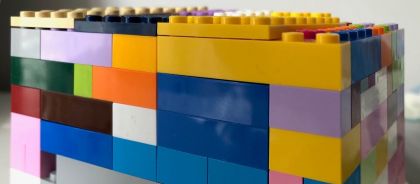
Blog
Benefits of building blocks - join in our challenge!
Is there still a place for plastic building blocks in a loose parts, natural environment nursery and pre-school? Building blocks are a powerful learning tool and help children to develop their fine motor skills, hand-eye coordination, spatial awareness and reasoning. Annie Tierney, Head of Operations, discusses why we still have plastic building blocks in our nurseries and sets your children a challenge for this week.
We are passionate about creating environments full of resources that create awe and wonder for our children. My role is to work with our team to bring this passion and vision to life by ensuring we have welcoming spaces that offer active learning opportunities to our children using real items and experiences. This often means reducing over stimulating colours, noises and reducing the number of plastic toys in the nurseries.
Our construction areas and play often relies heavily on the use of wooden blocks, also called "building blocks," that are solid shapes that stack on top of each other. However, I feel it is very important for children’s developing skills and learning that we continue to provide the brightly coloured interlocking blocks made out of plastic as they offer endless learning opportunities for our children and there really is a place for these within our nurseries.
These types of blocks can be used as a powerful learning tool and help children to develop their:
- Fine motor skills
- Hand-eye coordination
- Spatial awareness and reasoning
- Cognitive flexibility
- Language skills
- Creativity
- Problem solving
- Critical thinking
- Social competence
- Engineering skills
There is also evidence that complex block-play is linked with higher mathematical achievement, this can only be a good thing…right? Construction play has been linked in many studies across the world that shows improved maths skills in children that engage regularly in ‘LEGO’ play. Given the well-known link between spatial ability and mathematics achievement, it is plausible that structured block play could enhance math skills indirectly, via improvements in spatial reasoning. Tip that LEGO out of the box!
Why not try our Building Block Challenge next week – a new challenge every day!
Top Tips for playing with building blocks
1. Engage young children by participating yourself and engaging them in spatial talk
Children get more from block play when someone demonstrates how to build with them. Children also benefit when we talk with them about spatial ideas, e.g. what size block do you need for that space? How many bricks do we need to build a tower?
2. Encourage cooperative building projects
Younger children benefit from playing cooperatively with other children of different ages. You may need to play the part of setting a project or getting children playing together. It might be a younger child searches for all the green bricks whilst the older child builds the start of the structure. They may need your help to start thinking like this, stay on task and play cooperatively to the same end goal.
3. Challenge children with specific building tasks
Free play is very important and something that Kindred champions however, we know that children also benefit from adult led activities and structured learning opportunities. Get your child trying to match a structure to a template, you could print a picture of a basic house and then ask your child to build one. Our Building Block challenge will give you some more ideas and inspiration for this.
4. Remember that imaginative play can be used with block play
Construction play seems so obviously mechanical but remember children will also benefit from fantasy and make-believe. Think about your child’s current interests and what is igniting their imaginations. If they are really interested in dinosaurs then perhaps build a dinosaur park.
5. Stimulate interest in toy blocks by providing children with character toys and other accessories
Is your child a reluctant builder? Then you can add small world characters, vehicles, real objects to make a land. Grass, flowers, mini toys from a dolls house or something similar can change play completely and get your child interested in building and extending their building to create a ‘world’.
6. Combine block play with story-time and role play
After a story give your children props and bricks to recreate the story. You can use this time to talk about the story, problem solve, ask questions whilst building and being creative. For example, the story of the three little pigs, you could then make the pig characters and the wolf, collect sticks and hay to build houses and then build a house of bricks.
7. Toy blocks may help with problem-solving
Psychologists recognise two major types of problem for children to solve:
- Convergent problems that have only one correct solution.
- Divergent problems that can be solved in multiple ways.
Because children can put together blocks in a variety of ways, block play is divergent play and divergent play with blocks will prepare children to think creatively, critically and be problem solvers.
8. Creativity through open-ended play
Give your child a box of basic bricks and you are likely to see them play attentively for hours. Simple blocks and construction toys allow children to play with no directions, no mistakes to be made and there does not have to be an end product or goal. Again, another concept that I am passionate about, for me it is about the process and not the end product! Whilst your child may start with an idea of or one of our challenges this can and should change direction over time, the idea is simply planted in their mind but we should encourage play to take new and different directions to follow your children’s interests.
We hope our Lego challenge will keep you and your children entertained over the coming week, but hopefully used alongside these tops tips, it should also provide endless learning opportunities for your children.
Download The Building Block Challenge here>>
Lego also have some great ideas to get building, check them out here>>
